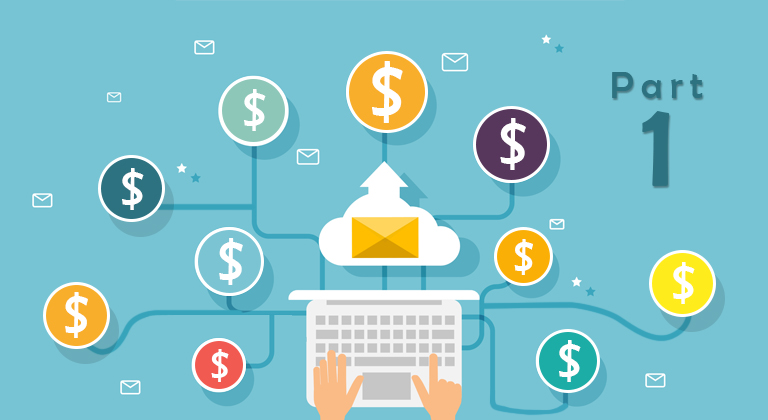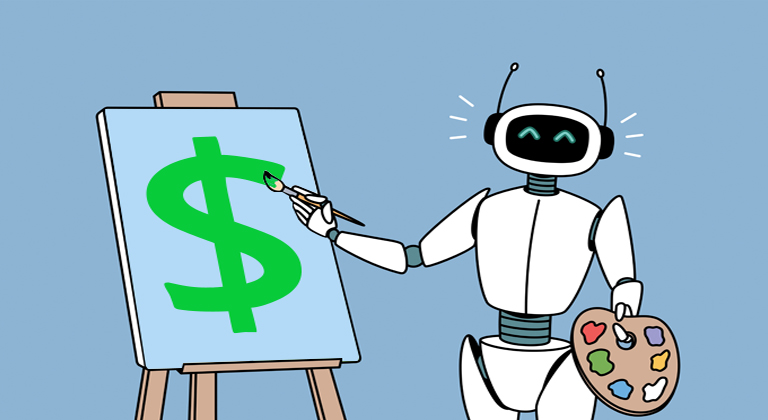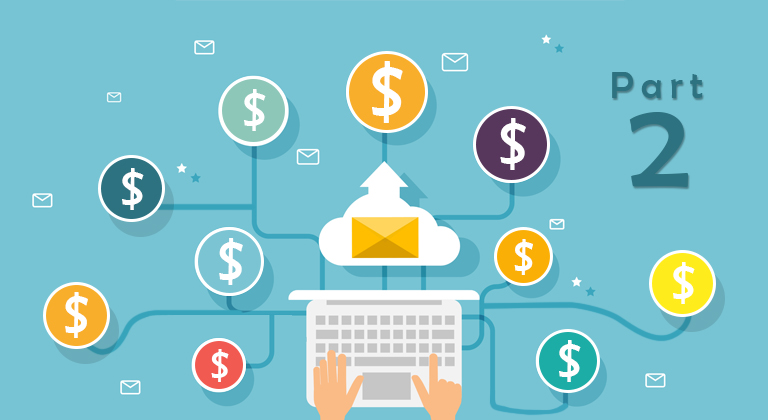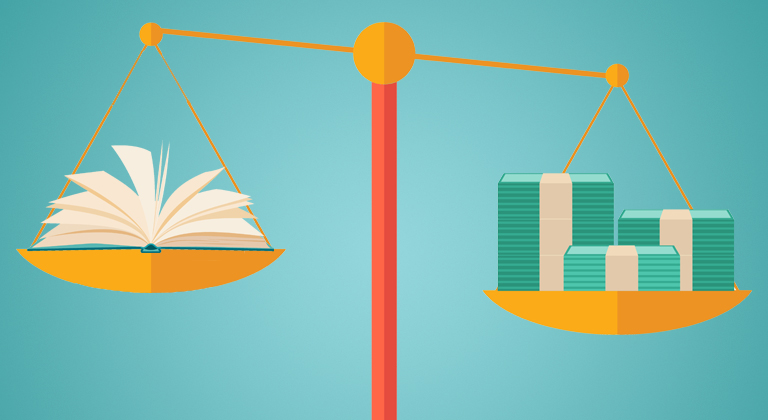Learning Tough Lessons from Direct Sales: Part 1
It’s been almost six months since Ginger began his direct sales journey, and while it has been profitable for him, the road to success has been far from smooth. Selling directly to customers, rather than relying solely on online eBook storefronts, is full of untapped potential but also comes with some surprising challenges.
As he’s learned, running a direct sales funnel is like building a complex machine—one with countless moving parts that must work in perfect harmony. Small hiccups can lead to significant losses, while each success feels like a hard-won victory. Yet every roadblock is a learning experience, and navigating around them has allowed him to refine his process further. Today, he’s sharing two of the biggest mistakes he’s made and how he was able to fix them. Then, next week, he’ll return with another challenge he faced and go through all of the lessons he’s learned, so you can avoid the same pitfalls if you choose the direct sales path.
It’s now approaching six months since I started my experiment in selling my eBooks directly to my readers, rather than exclusively through Amazon and other online retailers. I’ve written a number of posts about my experiences, and a good place to start is this one.
Overall, my results have remained positive. I’ve been able to consistently earn a profit on my advertising, even though it’s not as big of a margin as I’d like. The good news is that the metrics continue to improve. Constantly tweaking and optimizing the performance of your ads and sales pages helps you squeeze out fractions of a percentage here and there which ultimately add up to more consistent sales and a higher profit.
But it hasn’t all been plain sailing. I’ve run over a few potholes on the road to success, and managed to get stuck on a pretty big one for a while. I thought I’d take the opportunity with this blog post to share my experiences with you and helpfully help you avoid making the same mistakes as I did if you pursue a direct sales strategy.
Pothole #1: Breaking my Shopify Store
I mentioned this on a Fully Booked podcast episode that Craig and I recorded about direct sales, but I’ll go into a little more detail here. Long story short: I broke my Shopify store.
There are a number of different options you can use for selling your books directly. PayHip, Square, and Shopify are among the most popular and personally I like Shopify because of how I can customize the checkout process.
But one week, I noticed a problem. My ads were still humming along at quite a significant budget, but I suddenly stopped getting sales. Like, completely.
At this point, I’d built up enough of a cushion of profit to increase my daily ad-spend from $50 to $100 a day – a figure which would be unthinkable if I’d been sending traffic to my product pages on Amazon. Fortunately, I’d been consistently making enough sales to replenish my advertising budget every few days, so I was able to “churn” a few hundred dollars into this high ad-spend.
But this system of high ad-spend only works if you’re making sales – and when I suddenly went from 4-6 sales of my book bundles every day to nothing, I suspected there was a problem. Unfortunately, I didn’t figure out what that problem was for another couple of days.
Ultimately, it came down to a problem with my domain name. I’d tried to be fancy and use a custom URL for my Shopify store, which involves editing the DNS settings with your webhost (Bluehost, or GoDaddy, or whoever you use.) Unfortunately, at some point, the SSL certificate for my custom domain name expired and that meant every time somebody actually clicked “buy now” on my landing page, a huge red warning appeared in their browser that told them: This website might be unsafe.
As a potential customer, you might understand why that sounds off-putting. Hence why my ads had continued to run well, and I’d had the normal number of people click “buy now” on my landing page, but all of them closed their browser the moment that warning came up.
It was easy enough to fix once I’d figured the problem out – I actually abandoned my custom domain name and used a domain name from Shopify instead. Within minutes, my store was back up and running and I got my next sale shortly afterward.
But it had taken me DAYS to figure out what the problem was – and even to notice there was a problem in the first place! I’d burned through my advertising budget with nothing to show for it, and those potential customers had probably been scared off of clicking on my ads in the future since they’d received that scary warning when they reached the Shopify checkout.
It taught me that you have to be constantly vigilant when you’re running your ads, especially when you’re running them at a high budget. Direct sales gives you the opportunity to spend a lot more money on your advertising, but that comes at the risk of losing a lot more money as well. Worse than that, simple and innocent mistakes like mine can hurt the branding and reputation of your business and scare off potential customers.
You’ve got to remember that you’re not just advertising your books – you’re building a machine. A sales funnel is like one of those Rube Goldberg machines (you’ll be familiar with those if you’ve ever played the board game Mousetrap.) Your ads lead to your landing page, which leads to your checkout, and finally your delivery system – and if any of those stages of your “machine” break, the entire thing stops working.
So keep an eye on the performance of not just your ads, but also every step in your “funnel” from first click to final checkout.
Pothole #2: Running out of budget
The first pothole I encountered quickly led to my second. I ran out of money.
As I’ve mentioned above, one of the great advantages of direct sales is that you get your money so much quicker than through Amazon – instantly if customers use PayPal, or within a few days if you use a different checkout system. This is very, very different from Amazon, which reluctantly pays you 60 days after the end of each month (so you wouldn’t get the royalties from January until the 31st of March, for example.)
In terms of selling books, this is a game-changer. If I was advertising my books and sending traffic to my product pages on Amazon, I’d have to save up 60 to 90 days worth of advertising budget to run my ads consistently – and that’s assuming I’d get that money back in royalties at the end of every month. That automatically limits the advertising budget of most self-published authors, since we’re not exactly known for having huge piles of cash to throw around.
When you’re selling directly, however, you receive the money quickly enough that it can completely transform how much money you feel comfortable spending on your ads.
I started by advertising at $50 a day, for example, with an initial budget of $350 (enough to cover 7 days of advertising.) Right from when I started running ads, I was making a profit – and therefore by the time I’d gone through that initial $350, I’d already received my royalties from Shopify and had enough to replenish the budget. In theory, it should have been like a perpetual motion machine – recycling that advertising budget again and again, while building up a nice little profit along the way.
(I’ve been using a lot of machine metaphors this week.)
When I broke my Shopify store, however, I also broke this perpetual motion machine. At that point, I’d confidently increased my advertising budget to $100 a day and had been seeing some great results from that. However, I’d never increased my initial advertising budget of $350 and therefore only had enough surplus cash to cover three and a half days of advertising, rather than an entire week when my budget had been $50 a day.
That meant the moment the sales stopped coming in, so did the money – and in the three days it took for me to get my Shopify store working again, I’d blown through my entire advertising budget surplus. I had to find another $350 out of nowhere to pay Facebook and start advertising again.
Compounding this problem was that direct sales requires more investment than just paying for your advertising. I was also paying Shopify, paying for an expensive and elaborate landing page system (which is worth every penny, I might add) and my email provider. Throw in other essential business expenses like beer and cat food, and a seemingly chubby advertising surplus like $350 suddenly looks razor thin.
Previously, I’d been able to pay all these expenses with the profit I made from my direct sales. However, I’d stopped making a profit – and that meant I suddenly had to find all the money to pay these monthly expenses on top of paying for my advertising out of pocket.
To reuse the metaphor from earlier – I broke the machine again. This time, it wasn’t because I’d done anything wrong. It was just that until I paid for my landing page and other expenses, my sales funnel wouldn’t function – my ads would direct traffic to a suspended page.
Because every stage of your “machine” has to be working in unison to function, this stopped me running ads for a couple of weeks until I hustled my little tush off to earn enough money to pay all my bills – and when they restarted, I found myself wanting to stay at a modest, but more manageable budget of $50 a day again.
Obviously, I’ll get back to advertising at $100 a day soon enough – and then scale it up even more from there, as long as I’m still making a profit. However, you have to remain cognizant of your cashflow when you’re running direct sales, because it’s that much easier to spend money you don’t have when you know you’re (potentially) only a few days away from getting paid again.
Stand by for the BIG pothole!
These two potholes slowed me down for a little while, but were ultimately straightforward enough to navigate successfully. I was back up and running with my ads in just a couple of weeks, and I’ve continued to remain profitable since then.
However, I mentioned that I’d run into a much BIGGER problem, and that was something so significant that I think it warrants an entire blog post all to itself. Stay tuned for next week’s post and I’ll go into the biggest problem self-published authors might face when experimenting with direct sales – and discuss whether or not there’s a solution for it.












Ginger, thank you for sharing your experience. I’ve recently set up a Shopify store and have been experimenting with Facebook ads. I’m confused about something from your articles. You’re selling ebooks, a digital product. Doesn’t Facebook require a sales ad to be linked to physical products only?
Thanks for sharing Ginger. Where has been the best places to advertise your books?